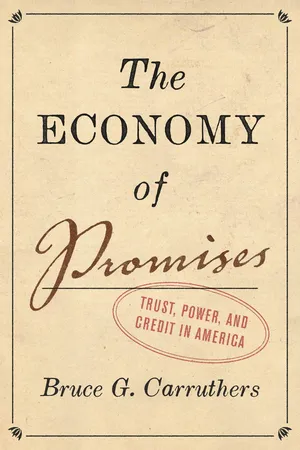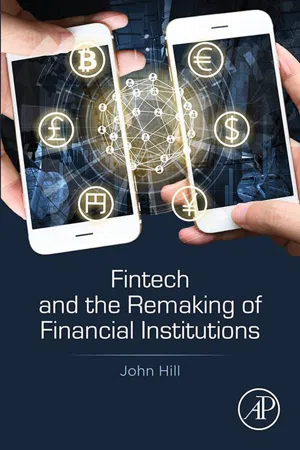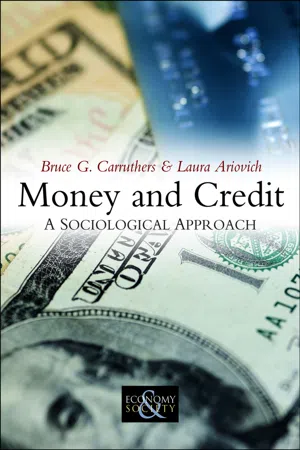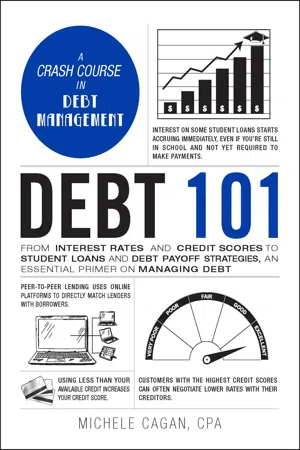Economics
Consumer Loan
A consumer loan is a type of loan extended to individuals for personal, family, or household purposes. These loans are typically used to finance large purchases such as a car, home improvements, or education. Consumer loans can be obtained from banks, credit unions, or online lenders, and they are repaid over a specified period of time with interest.
Written by Perlego with AI-assistance
5 Key excerpts on "Consumer Loan"
Learn about this page
Index pages curate the most relevant extracts from our library of academic textbooks. They’ve been created using an in-house natural language model (NLM), each adding context and meaning to key research topics.
- eBook - ePub
The Economy of Promises
Trust, Power, and Credit in America
- Bruce G. Carruthers(Author)
- 2022(Publication Date)
- Princeton University Press(Publisher)
These and other aspects of installment loans were abused by some lenders and prompted calls for regulation to protect borrowers. 53 Finance companies continue to play an important role in consumer finance. 54 At the end of 2015, they were the third largest institutional providers of consumer credit, after banks and the federal government. It is now a highly concentrated industry with a small number of large firms accounting for most of the activity, and such firms continue to specialize in specific types of credit: car loans, non-vehicle Consumer Loans, real estate, or business credit. 55 Since they are not banks, finance companies do not take deposits as a way to raise funds. Instead, in addition to their own equity they rely on nonrecourse borrowing (relying on loans secured with collateral) and issuance of notes, bonds, and debentures. And they generally either finance consumer purchases or make direct loans to consumers. Cash Loans This type of credit best exemplifies what we ordinarily think of as a “loan” and gives the borrower the unrestrained purchasing power of legal tender: money that can be spent however the borrower chooses. Unlike installment loans or store credit, which involve loans that are specifically devoted to a consumer purchase, cash is open-ended. Because cash represents generalized purchasing power, after the loan is made the lender has little control over how the borrower uses the money. While sellers were willing to fund sales to consumers, profiting from both the sale and interest on the loan, cash loans to individuals were slower to develop. Whereas store credit often had a predictable yearly pattern (farmers borrowed in the spring to repay in the fall, or people borrowed to fund Christmas gifts and repaid in the new year), the need for cash might arise unexpectedly. 56 A child fell seriously ill and so the family faced unusual medical expenses. A parent died and so the children had to deal with funeral expenses - John Hill(Author)
- 2018(Publication Date)
- Academic Press(Publisher)
Chapter 6Bank Lending
Abstract
Lending is the primary activity of banks and is also one of the banking products most susceptible to disruption. The lender seeks to earn a return on funds advanced, and the borrower requires capital for either investment or consumption purposes. A loan provides resources to a borrower now in exchange for the promise of the borrower to make repayment in the future. Loans are also important for executing monetary policy. Loans can be secured by collateral or unsecured. Interest rates can be fixed or tied to an index such as London InterBank Offering Rate. Consumer Loans include mortgages, car loans, credit card balances, and student loans. The most widely used credit scoring system is Fair Isaac Company (FICO). Loans are one of the most attractive and most successful products for Fintech companies such as Lending Club, Prosper, Kabbage, OnDeck, SoFi, Kiva, and many others.Keywords
FICO; LIBOR; VantageScore; marketplace lending; payday lending; P2P; Lending Club; LendUp; Prosper; Kabbage; OnDeck; SoFi; KivaLoans are the primary activity of banks and are also one of the banking products most susceptible to disruption. The lender seeks to earn a return on funds advanced, and the borrower requires capital for either investment or consumption purposes. A loan provides resources to a borrower now in exchange for the promise of the borrower to make repayment in the future. Loans are also important from a monetary policy point of view. More generally, the process of credit creation in the economy depends crucially on bank lending activity. Let’s look at an example. An individual deposits $1000 in a bank. The bank is required by the Fed to set aside or reserve a percentage of these deposits to cover potential withdrawals and as a cushion against loan defaults. This is the reserve ratio and the central bank may increase the ratio to rein in the economy or lower it to stimulate the economy. Assume the reserve ratio is set at 10%. Then in our example, the bank must keep $100 in reserves on deposit at the Fed. The bank can then lend out the $900 remaining from the original deposit, e.g., to a swimming pool maintenance company. The swimming pool company uses the funds to buy $900 worth of chemicals and other supplies. The supply distributor takes the $900 and deposits it in its bank account. The original depositor still has $1000 in demand deposits and the supply distributor owner now has $900, so there is $1900 in money in the economy. Of the $900 from the supply distributor’s deposit, the bank now has another $810 (10% of the $900 goes to reserves) to loan out to the next borrower. Thus, lending activity multiplies and the growth of the money supply continues. As the process goes on in successive rounds, the bank is able to loan out 90% of each earlier loan. The total amount that can be loaned can be shown to be 1/r times the original deposit, where r is the reserve ratio. In our example, the reserve ratio is 10% or 0.10. So, 1/r- eBook - ePub
Money and Credit
A Sociological Approach
- Bruce G. Carruthers, Laura Ariovich(Authors)
- 2013(Publication Date)
- Polity(Publisher)
Despite this perpetual need for credit, in the past ordinary people could not turn to banks in order to borrow. Commercial banks simply didn’t make personal loans like they do today, and their lending patterns were quite unlike those of contemporary banks. Banks generally made only short-term business loans, and individuals had to borrow elsewhere. Instead, individuals obtained credit from their suppliers, merchants, country stores, department stores, and friends and family. For particular purchases, they could secure particular types of credit: a mortgage to purchase land or a home, or an installment loan to acquire a durable good like a piano, sewing machine, or piece of furniture. Indeed, sellers realized that they could sell more goods if they also offered credit to their customers. If a person already owned a valuable object (like a watch or piece of jewelry), they could visit a pawnshop and use it to secure a short-term loan. And if none of these kinds of loan were available, people who were desperate could always turn to a philanthropic lender (like New York City’s Provident Loan Society), commercial small loan lenders (like Household Finance), or, more likely, to a loan shark. Only in the mid-1920s did commercial banks begin to make personal loans directly to individuals, and at first only wealthier customers were eligible.In general, credit seldom flowed to consumers in a single, even stream. Rather, it came in dribs and drabs, tied to particular purchases or coming from specific sources for specific purposes. The overall growth in credit for individuals has occurred in part because methods developed to support the extension of credit for one kind of purchase have spread to other kinds of purchases. More credit has allowed individuals to consume more (by anticipating future income), and it has allowed suppliers to sell more. Credit has also grown as a direct result of government policy, particularly in the case of home mortgages. Overall, the number of sources and the total volume of credit have increased substantially, and so now ordinary American families carry a large debt burden. As we are discovering in the current economic crisis, that debt burden may have become too large. - eBook - ePub
Debt 101
From Interest Rates and Credit Scores to Student Loans and Debt Payoff Strategies, an Essential Primer on Managing Debt
- Michele Cagan(Author)
- 2020(Publication Date)
- Adams Media(Publisher)
Education is an asset. A business you’ve built is an asset. When you borrow money to invest in yourself and your future, you’re debt funding an asset, even though it’s not something you can touch. While it makes sense to borrow money for these assets, many people over borrow and end up stuck with debt they can’t reasonably manage. Before you borrow for education or to start or expand a business, weigh the borrowing costs against the financial benefits. Make sure the education you’re getting gives you the opportunity to earn more money than you could without that degree. Consider the probability that your future earnings will outpace the money you’ve borrowed. Create realistic plans and projections to make sure that money you borrow to funnel into your business will be transformed into revenues that will more than cover the loan expenses. For the loan to be a good financial move, the benefits must outweigh the costs.BORROWING TO PAY FOR EXPENSES
Expenses have no lasting value; they’re consumable items that range from food to electricity to pencils. Borrowing money to pay for expenses is one of the fastest paths to financial insecurity. In fact, the number one rule of wealth building is to never spend more money than you earn. When you have to borrow money to cover your regular expenses, you’re doing just that: spending more than you earn.On top of that, loans made to cover expenses are generally unsecured (like personal loans), revolving debts (like home equity lines of credit), or both (like credit cards). These types of loans come with the highest interest rates, even for people with good credit. Over time, the expenses paid with borrowed money may end up costing you two or three times (possibly even more) than if you’d paid cash. That’s a bigger dent in your net worth for something with no future value.If you need to borrow to cover your basic monthly expenses, break out of that cycle as soon as possible. With a combination of spending less money and bringing in more money, you can change your financial position. Then you have the choice to borrow money on your own terms when you want to and not because you need to.Graduating with Credit Card DebtCollege students are increasingly turning to credit cards to cover living expenses, and many are using multiple cards. Only 51 percent plan to pay off their balance in full any given month. And 36 percent of college students rack up more than $1,000 in credit card charges before they graduate (according to a report by EVERFI).Passage contains an image
MAKING MONEY ON THE DEAL
Taking the OPM Path to WealthWhen you can earn money using other people’s money (OPM), you’re on the fastest path to building wealth. It’s a tool that billion-dollar corporations and the wealthiest people use to increase their fortunes, and you can use this strategy to your advantage as well. The trick here is to use their money to increase your net worth. That starts with qualifying for the best possible terms, like ultra-low interest rates, and buying assets that will increase in value, supply cash flow, or both. - eBook - ePub
Japanese Political Economy Revisited
Abenomics and Institutional Change
- David Chiavacci, Sébastien Lechevalier, David Chiavacci, Sébastien Lechevalier(Authors)
- 2020(Publication Date)
- Routledge(Publisher)
We also propose to connect the literature on collective actions and social mobilization to analyze the rising influence of the lawyers who represented the borrowers' interest in the legislative and judiciary arenas. 2.1. The Japanese consumer credit Informal small loans in rural popular finance (shômin kinyû) have been widely analyzed in the Japanese economic and financial history literature. Historically, moneylenders assumed an important role as an alternative form of informal credit to peasants, individual entrepreneurs and family businesses (Shibuya 1972, 2001). Pawnshops also developed in urban areas at the beginning of the twentieth century, taking opportunities from the rise of the consumer society and lack of regulation (Shibuya 1972, Sala 2015). In the postwar period, many shichiya changed their core business to enter the new market of unsecured personal loans (sarakin); however, research about this market and its development faded (Gelpi and Labruyère 1994). In comparison, installment sales credit was analyzed much more, especially by historians. Gordon (2006) shows how consumer credit companies developed in the prewar period in collaboration with department stores to propose installment sales credit to the emerging middle-class consumers. Since the 1950s, consumer credit companies developed new credit facilities to consumers with bank accounts 6 (Partner 2000, Gordon 2012). The apparent paradox between Japanese households' high saving rate and the rise of consumerism is partly due to this easy-access to consumer credit during the high economic and income growth period (Partner 2000). Simon Partner shed light on the gap between lower and higher income households' access to mass consumer society as lower income households had very few savings and bought consumer durables on credit, whereas higher income households could be both savers and consumers




